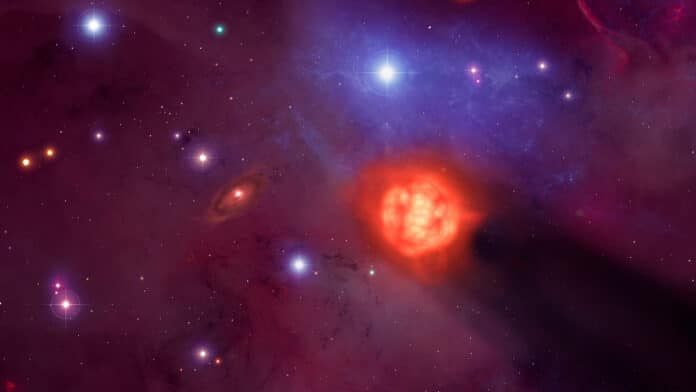Asymptotic Giant Branch (AGB) stars are old, developed stars that release a lot of radioactive chemical elements, including Aluminium-26 and Iron-60. In the early Solar System, when the Earth was forming, it was known that these components served as a source of heat.
The source of these elements was considered massive stars that formed nearby since it was thought that AGB stars did not have close contact with newborn stars. Confusion arises because it is believed that the radiation from these stars is so potent that it may prevent planets from forming.
The new study, by the University of Sheffield and Imperial College London scientists reports observing an AGB star moving through a young star-forming region. It presents a potentially more viable way of providing these radioactive elements.
The study suggests that old stars roaming through new star-forming regions could be responsible for a radioactive heat source important for young planets. The discovery of an older star passing through a zone where stars are forming provides evidence that these kinds of stars may be able to supply developing solar systems with vital radioactive elements.
Lead author Dr. Richard Parker, from the University of Sheffield, said: “AGB stars have been known to be a viable source of Aluminium-26 and Iron-60, but until now researchers have been skeptical that these old, evolved stars could ever meet young stars that are forming planets.
“By showing that AGB stars can meet young planetary systems, we have shown that other sources of Aluminium-26 and Iron-60, such as the winds and supernovae of very massive stars, may not be required to explain the origin of these chemical elements in our Solar System.”
Thanks to the Gaia satellite, scientists discovered the AGB star in the star-forming region NGC2264. The region contains the Cone Nebula and the Christmas Tree Cluster – about 2,500 light-years away.
The researchers calculated how much a star like our Sun could absorb Aluminium-26 and Iron-60 from the AGB as it developed its planets in addition to detecting this AGB star.
Dr. Christina Schoettler from the Department of Physics at Imperial College London, who identified the AGB star in the Gaia DR3 data, said: “Gaia is revolutionizing our ideas about how stars form and then subsequently move in the galaxy. This discovery of an old evolved star in close proximity to young planet-forming stars is a wonderful example of the power of serendipity in scientific research.”
Journal Reference:
- Richard J. Parker and Christina Schoettler. Isotopic enrichment of planetary systems from Asymptotic Giant Branch stars. Astrophysics Journal Letters.
